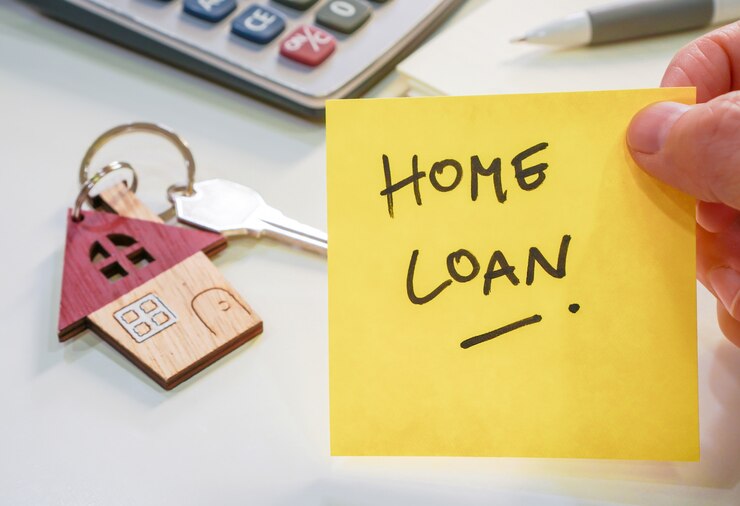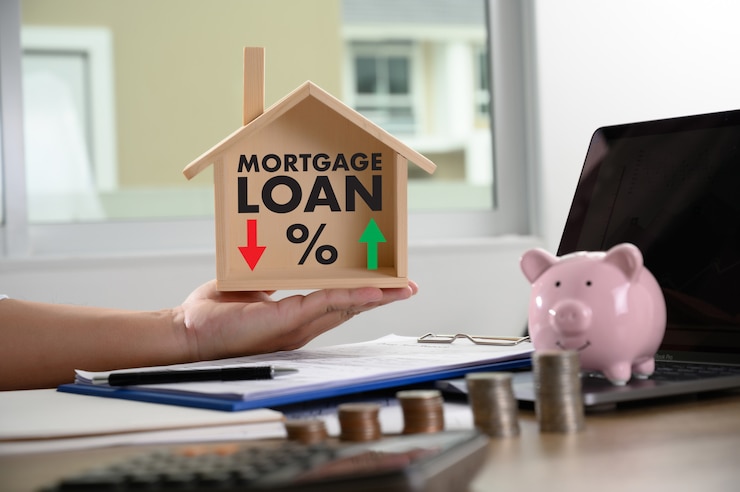For many, the traditional route to homeownership involves saving up a sizable down payment. According to popular belief, in order to qualify for a mortgage, you need a sizable nest egg. Home Loan with no down payment may sound like a faraway dream to people who haven’t saved enough to make the necessary financial commitments. It is, in fact, feasible under specific conditions, which is great news. So, let’s get down to the business of making your goal a reality.

A zero-down mortgage is a Home Loan that allows you to buy a property without making a down payment, enabling you to finance 100% of the home’s purchase price. These loans are backed by government agencies, such as the Department of Veterans Affairs (VA) or the U.S. Department of Agriculture (USDA), which gives guarantees to lenders, minimizing their risk.
The main benefit of zero-down mortgages is that they remove the large upfront cost of a down payment, making homeownership more accessible for first-time home buyers and those with limited savings. However, eligibility requirements vary based on the specific loan program, and factors such as credit score, debt-to-income ratio, and income limits may apply. Additionally, while beneficial in the short term, zero-down mortgages may result in higher monthly payments and increased overall interest costs over the life of the loan.
A Mastery of the No-Money-Down Method:
To qualify for a mortgage without putting down the conventional 20%–20% of the home’s buying price is to buy a house with no money down. Sixty thousand dollars for a property worth $300,000. While the conventional wisdom holds that you must set aside or deduct this sum from your assets, there are other ways to get around this rule altogether.While there are choices for first-time home buyer loans with zero down, not everyone will qualify for one.
However, there are several loan programs available that offer low-down-payment mortgage choices, making homeownership more accessible for many Americans. These programs can help you secure financing for your primary residence while minimizing the initial out-of-pocket costs.
Types of No-Money-Down Options VA Loans:
One of the most well-known choices for buying a Home Loan with no money down is the VA loan. Available to veterans, active-duty service members, and some members of the National Guard and Reserves, VA loans are backed by the U.S. Department of Veterans Affairs. These loans are meant to help military members become homeowners without requiring a down payment. Additionally, VA loans frequently come with beneficial terms, such as lower interest rates and no private mortgage insurance (PMI) requirement.The best way to buy a house with no money down is to use a government-backed mortgage.
VA loans are designed for veterans and current military members, and they offer the advantage of no down payment and no requirement for mortgage insurance. To be eligible for a VA loan, you must meet specific service standards, such as serving 90 consecutive days during wartime or 181 days during peacetime.
Similar to this, USDA loans are meant for borrowers in rural and some suburban areas and also offer the benefit of no down payment. To apply for a USDA loan, your property must be located in an eligible rural area, and your income must not exceed 115% of the area median income.
USDA Loans:
Another government-backed lending option is the USDA loan, which is accessible through the U.S. Department of Agriculture. This program is geared at low-to-moderate-income buyers in rural areas. To qualify, the property must be located in an appropriate rural zone, and the borrower’s income must fall below specific limits. Like VA loans, USDA loans do not need a down payment and offer competitive interest rates.
Home Loan Down Payment Assistance Programs:
Various state and local governments, as well as non-profit organizations, offer down payment help programs. These programs provide grants or loans that help cover the down payment and sometimes even closing costs. Eligibility restrictions vary every program but often include characteristics like income limits, first-time homebuyer status, or the purchase of a home within a specified price range.
Piggyback Loans:
Piggyback loans, often known as second mortgages, involve taking out two separate loans to cover the purchase price. The first loan covers 80% of the home’s value, while the second loan covers the remaining 20% (which would typically be the down payment). This strategy allows purchasers to avoid PMI and maybe achieve a higher total interest rate. However, it’s crucial to be cautious of the conditions and interest rates on both loans.
Negotiate with the Seller:
In rare circumstances, purchasers might bargain with the seller to cover the down payment. This is less typical but can be a realistic choice in a buyer’s market or with motivated sellers. Buyers could ask for the seller to grant a credit towards the down payment or negotiate additional arrangements that can lower the initial cash needed.
Lease-to-Own Agreements:
Lease-to-own arrangements, or rent-to-own contracts, allow potential buyers to rent the property with the opportunity to acquire it later. A percentage of the rent payments is often allocated towards the purchase price or down payment.

While this doesn’t eliminate the need for a down payment entirely, it can provide a way to build up savings over time while securing a future purchase.
Qualifying for a No-Money-Down Mortgage:
Securing a no-money-down mortgage needs more than just locating the correct financing package. Lenders will analyze your creditworthiness, income stability, and general financial health. Here’s what you’ll need:
Good Credit Score:
A solid credit score is vital when qualifying for any mortgage, including those with no down payment. Lenders evaluate your credit score to measure your reliability as a borrower. Generally, a higher credit score improves your chances of qualifying for a no-money-down mortgage and receiving better conditions.
Stable Income:
Lenders want to ensure that you have a solid and reliable source of income to support your mortgage payments. Providing proof of steady employment and sufficient income will be crucial in demonstrating your ability to manage a mortgage without a down payment.
Debt-to-Income Ratio:
Your debt-to-income (DTI) ratio is another crucial issue. This ratio compares your monthly debt payments to your monthly income. Lenders normally prefer a smaller DTI ratio, as it suggests that you’re not overextending yourself financially. A strong DTI ratio can help you qualify for a mortgage, even with no down payment.
Property Requirements:
For government-backed loans like VA and USDA, the property itself must meet particular conditions. For instance, VA loans ensure that the residence satisfies minimal property standards, whereas USDA loans are limited to rural areas. Ensure that the property you’re interested in matches these criteria before applying.
Benefits of No-Money-Down Mortgages Accessibility:
The biggest advantage is making homeownership accessible to those who might otherwise struggle to save a sizable down payment. This is especially useful for first-time purchasers or those with modest savings.
Preservation of Savings:
By not needing a down payment, you can retain your resources for other expenses such as relocation charges, home improvements, or emergency cash. This can give a financial cushion and promote overall financial stability.
Potential for Investment:
For real estate investors, buying homes with no money down can free up capital for other investments. This method enables for portfolio expansion without tying up considerable sums of cash.
Drawbacks to Consider Higher Monthly Payments:
Without a down payment, your loan amount will be larger, which might lead to increased monthly mortgage payments. It’s crucial to verify that these payments fit inside your budget.
Potential for Higher Interest Rates:
Some no-money-down solutions may come with higher interest rates compared to standard loans with a down payment. It’s vital to compare rates and terms to locate the best bargain.
Risk of Negative Equity:
With no down payment, you start with 100% financing, which implies any reduction in property value might lead to negative equity. This occurs when the home’s value falls below the loan balance, potentially jeopardizing future financial stability.
Home Possible loan program:
Similar to the HomeReady program, Freddie Mac’s Home Possible loan program gives a 3% down payment option for low-income and first-time home buyers. This program has a minimum credit score requirement of 660 and allows for creative sources of funds for the down payment and closing costs. Additionally, the Home Possible program offers lower mortgage insurance premiums, making your monthly mortgage payment more affordable.

The Home Loan Ready loan program, offered by Fannie Mae, is meant to help low-income and first-time home buyers. This program allows for a down payment as low as 3% and offers flexible credit standards. To qualify, your income must be at or below 80% of the area median income (AMI). One of the benefits of this program is that it allows you to use gifts, loans, or other sources of funds for the down payment and closing costs.
Final Thoughts:
Buying a house with no money down is not a pipe dream; it’s a feasible alternative with the right strategy and qualifications. Government-backed loans, down payment assistance programs, and imaginative financing techniques offer alternatives for those who might not have considerable funds. However, it’s crucial to measure the benefits against the potential drawbacks and carefully examine your financial condition before proceeding.
If you’re contemplating this approach, contact with a mortgage expert or real estate specialist who can guide you through the process and help you locate the best solutions for your circumstances. With the correct planning and preparation, homeownership with no money down can be a feasible goal.











1 thought on “Can You Obtain a Home Loan with Zero Down Payment?”